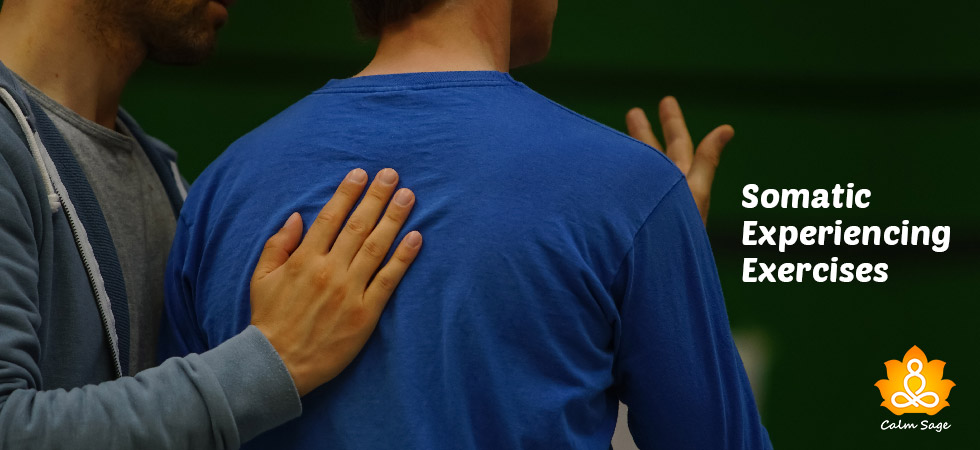Mindfulness-Based Art Therapy (MBAT) | Meaning, Benefits & Activities
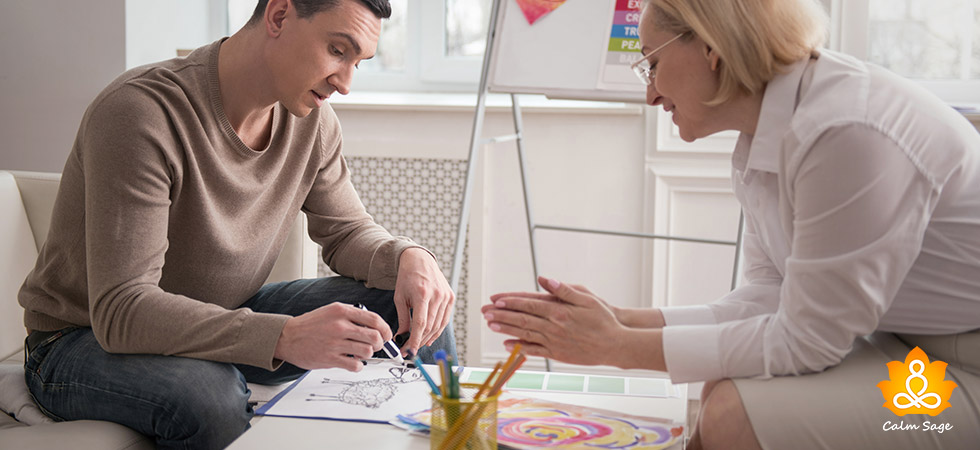
We’ve all heard about art therapy and mindfulness and how they contribute to a therapeutic process but did you know about mindfulness-based art therapy? MBAT is a relatively new approach to therapy that integrates art therapy and mindfulness techniques to help in healing.
Let’s start by understanding the meaning of Mindfulness-based art therapy (MBAT).
What Is Mindfulness-Based Art Therapy?
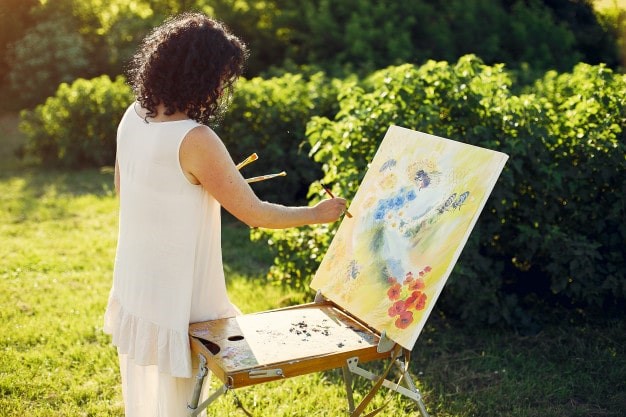
“Mindfulness means being awake. It means knowing what you are doing.” – Jon Kabat-Zinn
Mindfulness is the practice of gaining self-awareness of emotions, sensations, and thoughts. When you’re mindful of your thoughts and feelings, you gain an increased sense of
self-awareness and the ability to reflect on your present moment in life.
Art therapy was adapted as a form of treatment in the 1940s. This therapy approach requires a person to create art as a way to express their thoughts and release their emotions. In some cases, a psychologist analyses the art to gain insight into a person’s psyche and psychological problems.
When you combine the theories of mindfulness with the practicality of art therapy, it results in a
therapeutic technique called mindfulness-based art therapy. This therapy concept was first introduced in 2009 by psychologist Laury Rappaport. This therapy treatment encourages a person to engage in creativity mindfully.
Mindfulness-based art therapy can also be referred to as focus-oriented art therapy. Focus is the keyword in the overall experience of expressing oneself via art.
Benefits Of Mindfulness-Based Art Therapy
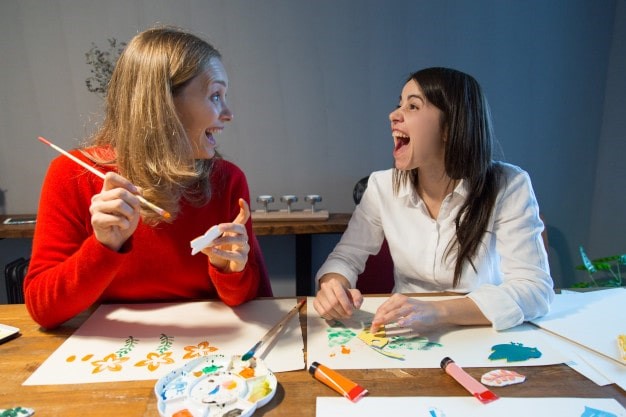
Mindfulness-based art therapy benefits can be:
- Improved psychological strength
- Increase in one’s quality of life
- Increase calm and focus
- Reduce thought suppression during distress
- Improved self-trust and intuition
- Improved self-awareness especially emotional awareness
- Improved sense of control
- Improved ability to express feelings
- Increased self-esteem
- Better attention span
MBAT is an easier to-do practice and can be done at home. While MBAT is not a substitute for therapy treatment, engaging in MBAT activities along with continuing therapy can help manage daily stress and anxieties.
People with the following disorders and issues can benefit from seeking mindfulness-based art therapy:
- Anxiety disorders
- Eating disorders
- Substance Abuse
- Depression or depressive disorders
- Stress, and
- Anger issues
MBAT can also help people with physical illnesses such as coronary artery disease or cancer. MBAT mainly focuses on reducing stress and improve the quality of life.
Activities In Mindfulness-Based Art Therapy
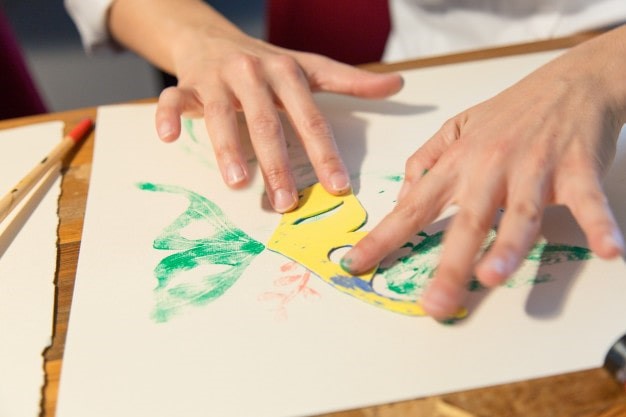
MBAT can be done without a therapist but it is recommended you seek a professional’s opinion before trying MBAT at home. Mindfulness-based art therapy activities can be:
1. Draw Yourself
This is a self-acceptance activity. Draw yourself on a piece of paper and try to keep it as realistic as possible. Once you’re done, identify the “flaws” in the picture. This exercise aims at you being mindful of and accepting of your flaws. This activity will help you increase your self-esteem and confidence as well as self-awareness and self-acceptance.
2. Study Art
This activity is to help you engage your five senses to increase your awareness. Take an art piece – drawing, sculpture, etc, – and examine it using your five senses. Ask yourself;
- What do I see?
- What do I feel?
- What am I touching?
- What am I hearing?
- What am I tasting?
Engaging your senses and noticing your responses to art will help you increase your self-awareness and improve your daily experiences.
3. Use Expressive Arts
When you create art – whether it be a painting, sculpture, drawing, or dancing – try to express your emotions and feelings onto your art form. Notice the physical sensations when you’re creating art along with your psychological sensations. If you’re happy, sad, or stressed, use art to express what you’re feeling.
Sometimes it can be difficult to understand how you’re feeling after an overwhelming day. In such cases, expressing your feelings with art can help you recognize your needs and emotions.
4. Mandala Hands
As the name of the activity suggests, trace your hands on a sheet of paper and inside your handprints, draw mandala designs. You can then paint them different colors or write affirmations or quotes to help you express how you’re feeling in the moment.
5. Painted Rocks
Painting on smooth rocks is one of my favorite art activities. All you need to do is pick up a paintbrush, some colors, and paint on the rock what you’re feeling. You can also listen to some quiet, soothing music and paint what you feel like at the moment. This is a wonderful self-reflection activity.
6. Lazy 8
Lazy 8 painting is another activity that can help you stay in the present when you feel distressed. It’s an easy-to-do activity that can also help you regulate your breathing. Many people, during stress, like to trace figure 8. In this exercise, instead of tracing, use paint to draw 8 and breathe as the brush strokes. This activity can help you in mindful breathing.
Children & Mindfulness-Based Art Therapy
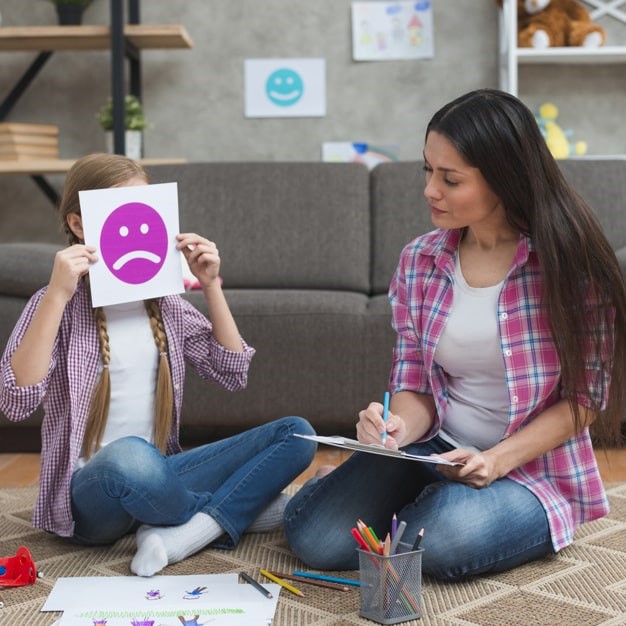
More often than not, mindfulness-based art therapy is used to help children struggling with trauma, physical illnesses, or other psychological disorders. With the help of MBAT, children can learn to increase self-awareness, emotional resilience, self-confidence, and self-compassion.
Along with art-based therapy techniques, MBAT can also include drama therapy and music therapy. This therapy approach aims to help people express their feelings and increase relaxation.
Final Words
Mindfulness-based art therapy merges the techniques of mindfulness and art therapy to offer relief from psychological disorders and physical illnesses. Mindfulness-based art therapy benefits adults and children and can help in improving self-awareness, self-acceptance, and emotional resilience among others.
If you or someone you know are struggling with psychological, emotional, or physical issues where you feel like they would benefit from MBAT, consult with a professional. You can always write to us at info@calmsage.com for more support and information.
“Art is to be moved, to love, to hope, to tremble, to live.” – Auguste Rodin
Live healthily, love heartily!







